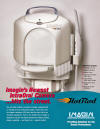

Atari 64-bit* Game Console - Dismantled for reference and curiosity
The Atari Jaguar was the very first arguably* 64-bit gaming console and like the Atari Lynx (the first hand held colour portable game system) it should have sold better.
In 1993 the Jaguar was classic Atari's last swing at the game market after failure of the Lynx. The Jaguar was a serious bit of hardware, well and truly above and beyond its competitors Sega's Mega Drive / Genesis and Nintendo's Super Nintendo; both 16-bit systems.
Unfortunately, as has been the case for many consoles, the Jaguar suffered from a comparatively small game library. Historically consumers will buy a significantly inferior system with lots of games (looking at you Game Boy) vs. a better one with only a few. If a console doesn't launch with a solid game library and immediate marketing boasting more titles soon to be released it will traditionally struggle.
While there were a number of issues with the hardware itself (as all systems do), due to its powerful yet segmented architecture the Jaguar was amazingly difficult to write software for reducing interest in third party development. Documentation from Atari was also limited and incomplete adding to the problem.
The Jaguar had a good chance, however when Sony and Sega brought their 32-bit consoles onto the market with an impressive line up of new software its days were numbered.
In addition to a number of distributed and unreleased add-ons (including a VR Headset) a CD drive was sold in an attempt to boost and save the system but it too was unsuccessful.
Interestingly enough, while the Jaguar was difficult to code for, the PS2 and PS3 are reportedly more difficult however they have the strong backing of Sony and an established gamer following to make the effort viable.
Final Tip: If you're looking to buy a Jaguar and aren't sure whether it's NTSC or PAL format, the power LED is the giveaway. NTSC units have a red power light while the PAL Jaguar light is green.
The moulds for the Atari Jaguar were later sold and have since been used as the shell for a dental camera.
*
The arguably comes from cries at the time that while the components equate to 64-bit processing the GPU and CPU could only interprets command sets that were 32-bit. On the flip side the data path from DRAM to the three possessors was 64-bits wide. Marketing vs. technical interpretation left a lot to be desired, however safe is to say it was a fairly unique system for the time.

